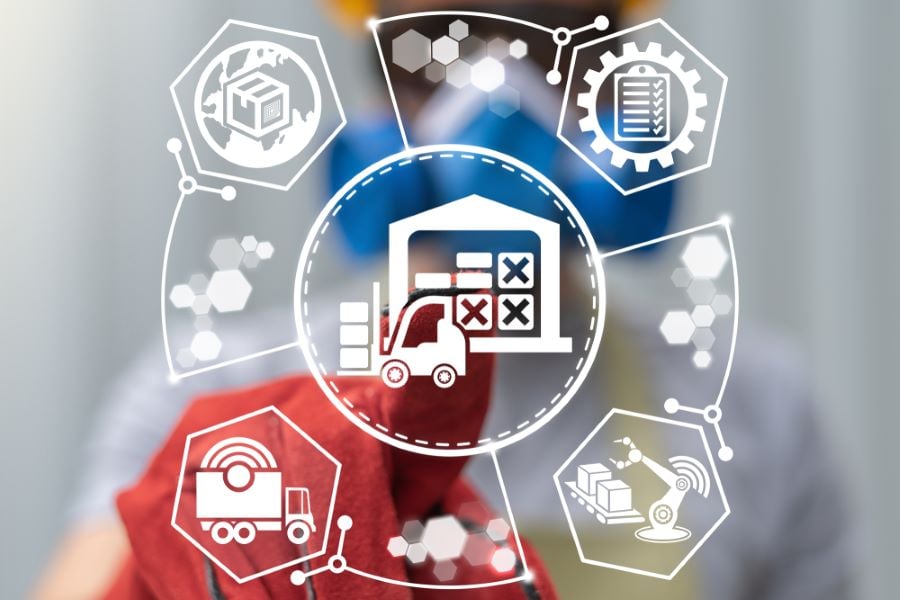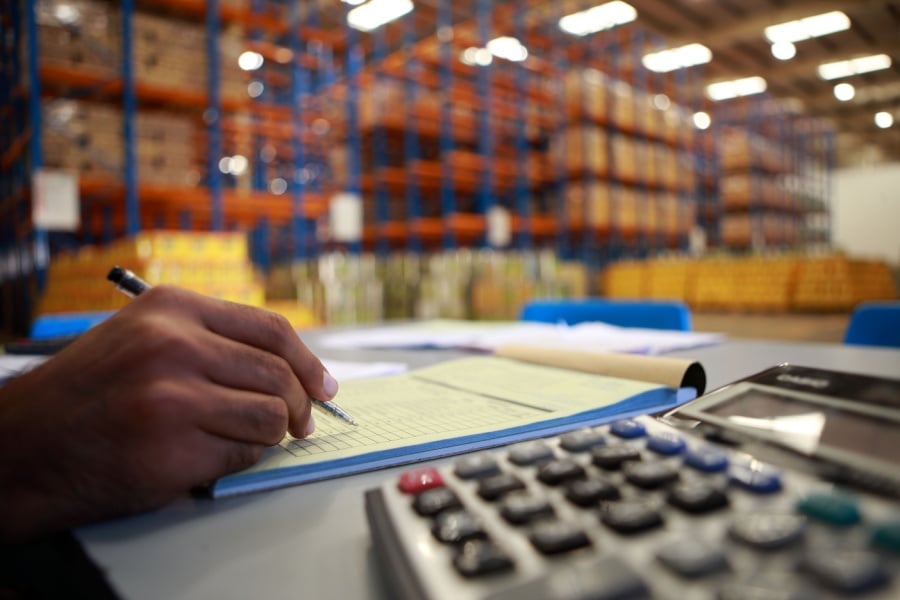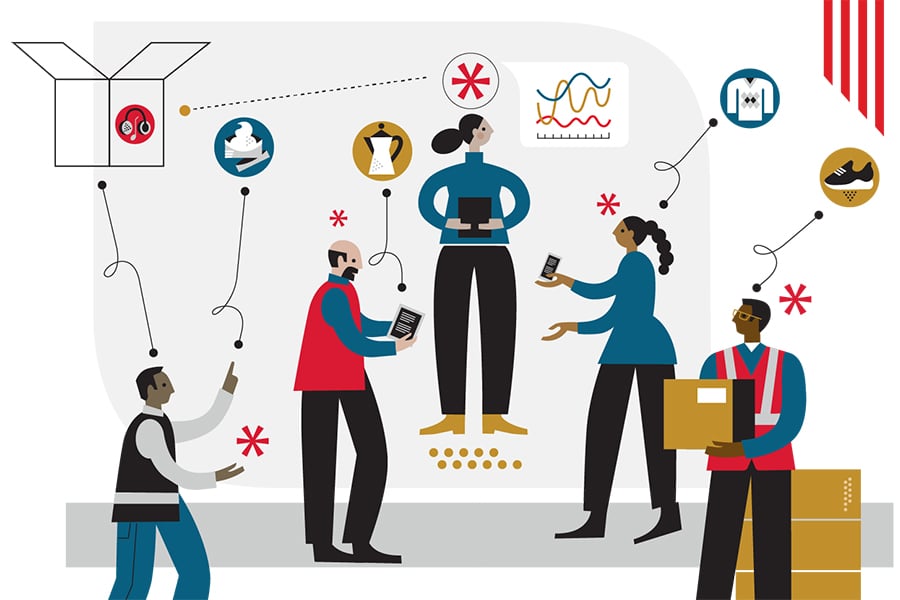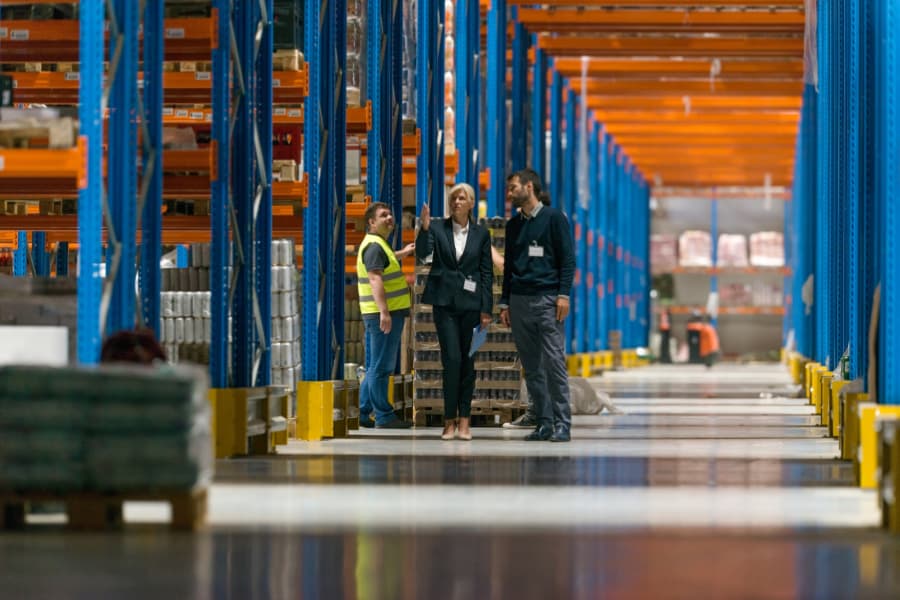Technology plays an increasingly large role in how supply chains operate, and has created a sea change for the industry. Innovations such as analytics, virtual reality, and warehouse automation have enabled lower costs, streamlined operations, and happier customers. In fact, a majority of supply chain organizations embrace technology integration as a competitive advantage and are making sizable investments in it.
Let’s explore several innovations supply-chain companies rely on in their day-to-day operations.
Data analytics
Data is the key to any successful business, and supply chains are no exception. Data predicts demand, optimizes inventory and travel routes, and roots out cost savings wherever they may be. Analytics tend to group into five categories:
- Descriptive, which helps analysts understand how all parts of the supply chain work
- Diagnostic, which helps identify supply-chain issues, like missed sales targets or late shipments
- Predictive, which forecasts future events, such as seasonal fluctuations or global interruptions
- Prescriptive, which helps develop solutions to overcome issues like operational efficiency or inventory management
- Cognitive, which uses machine learning and AI to manage the reams of data that supply chains produce daily
Each method uses data in different ways to make your supply chain more efficient.
Internet of Things (IoT)
The Internet of Things (IoT) allows a wide variety of devices and everyday objects to contribute valuable data to the supply-chain process. Tools such as RFID tags and sensors make it easier to track shipments and boost efficiency.
Other uses for IoT in supply chains include:
- Tracking shipments in real time with connected IoT devices on containers or products
- Monitoring storage conditions such as temperature, humidity, pressure, and light intensity
- Precise prediction of arrival times by monitoring shipment speed and any traffic conditions, as well as instant notification of delays
- Finding what you want in storage with a simple tap on the screen; each item will have its own IoT tag
These make it easier to manage inspections and invoices after goods have arrived.
Automation and robotics
The role of warehouse automation has grown in supply chain logistics. From robotic process automation (RPA) to automated guided vehicles (AGVs), it reduces the need for manual labor, streamlines warehouse processes, and improves accuracy.
Experts predict that by 2026, three-quarters of large supply chain operations will use smart robots in their warehouses and distribution centers. Logistics experts like Ryder use Locus Robots and AutoStore towers to efficiently identify and move goods.
Visibility and collaboration
Visibility allows everyone in your supply chain -- manufacturers, suppliers, carriers, partners, customers, and your internal team -- to find any one item in the supply chain at any given time with real-time monitoring. Your logistics managers and engineers can become experts in all phases of the supply chain, without relying on specialization that can slow down operations and inhibit quick, informed decisions.
Collaboration is fairly straightforward: cooperation with all stakeholders along the supply chain lowers costs, improve product quality and safety, and uphold high ethical and environmental standards. The ability to interact with partners and customers and monitor changes and track notifications in real time helps build transparency and collaboration.
Luckily, some digital platforms like RyderShare combine both into one convenient solution.
Augmented Reality (AR) and Virtual Reality (VR)
AR and VR technologies have created opportunities for supply-chain companies to optimize how they train workers, repair vehicles, and generally do their jobs more efficiently. AR wearable devices enable workers to optimize warehouse and transport operations by allowing them to scan for the most efficient packing process.
Virtual reality reduces time spent training new employees by immersing them in experiences that quickly give them more information on products, safety, and company processes.
Let technology enhance your supply chain experience
Real-time visibility, convenience, personalized service, and speedy troubleshooting are key benefits of supply-chain technology. Companies that take advantage of these innovations will exceed customer expectations, create loyalty, and provide remarkable service.
Ryder’s technology-driven, forward-thinking logistics expertise provides the tools needed to meet supply chain needs. The RyderShare™ platform provides stakeholders with constant real-time collaboration and visibility using automation thoughtfully. Ryder ShopMod enhances truck maintenance by giving technicians more control over the process and shortening customer wait times.




